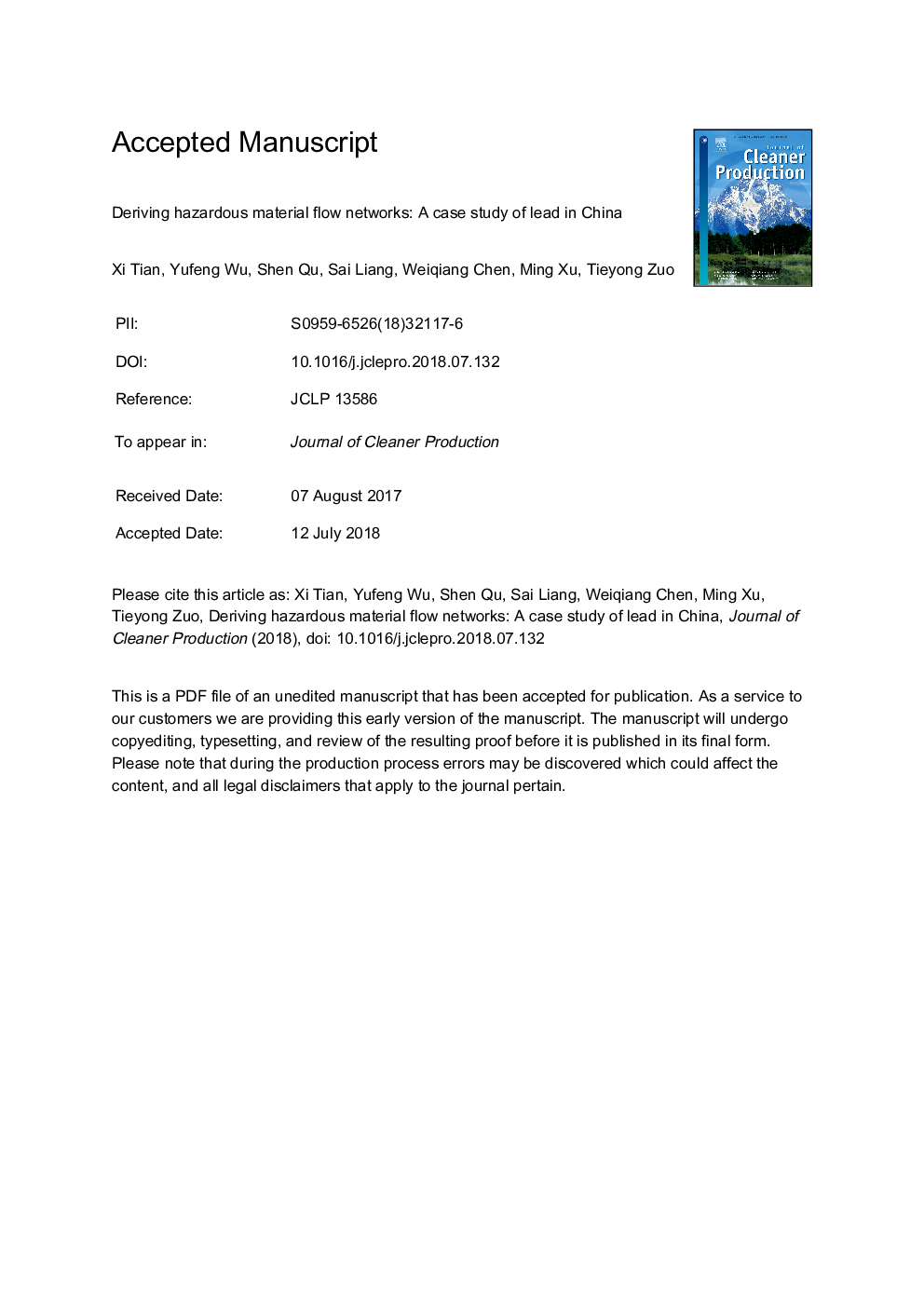| Article ID | Journal | Published Year | Pages | File Type |
|---|---|---|---|---|
| 8093184 | Journal of Cleaner Production | 2018 | 36 Pages |
Abstract
Hazardous substances are used as additives in many products. It is a challenge to monitor hazardous substance flows through complex economic systems. This study seeks to derive these hazardous material flow networks based on material flow analysis and a lower resolution monetary input-output table. The lead material flow networks for China in 2012 is studied as a representative case. Using adjusted input-output material flow networks (AIO-MFN), a complete and more accurate picture of lead flow networks in China is presented. Some previously unavailable lead material critical sector and flows are identified: 1) The specific lead material domestic demands, inflows, and outflows of 34 critical economic sectors in China during 2012 are found; 2) It is found that 74 intersectoral lead flows which are more than 5 k tons; 3) The flows from refined lead to batteries (containing lead-acid battery), chemicals for painting (containing lead oxides), nonferrous metal processing (containing lead alloy), and cable electrical materials (containing lead sheathing) sectors are 3,671, 364, 434, and 41 k tons, respectively. The lead dissipation from the critical sectors to the environment is estimated and potential environmental risks are indicated. This method can be used to approach the complete flow picture of typical hazardous materials (non-bulk materials) by using the lower resolution IOT.
Keywords
Related Topics
Physical Sciences and Engineering
Energy
Renewable Energy, Sustainability and the Environment
Authors
Xi Tian, Yufeng Wu, Shen Qu, Sai Liang, Weiqiang Chen, Ming Xu, Tieyong Zuo,
